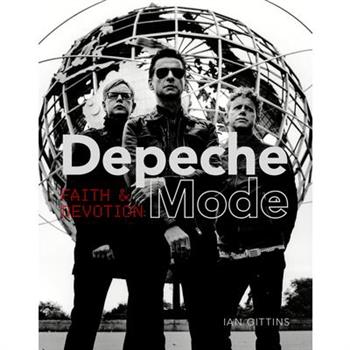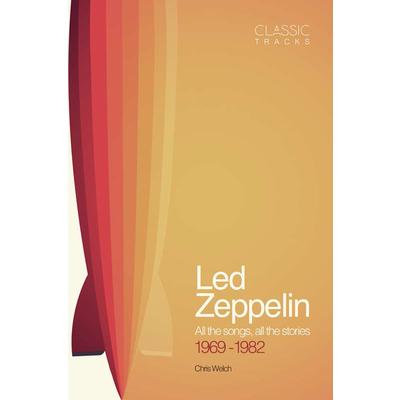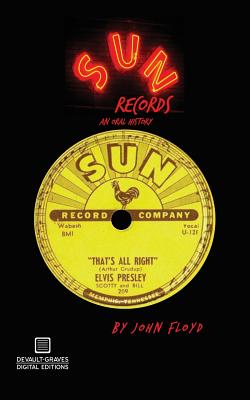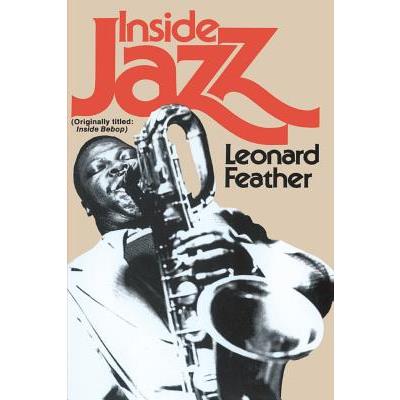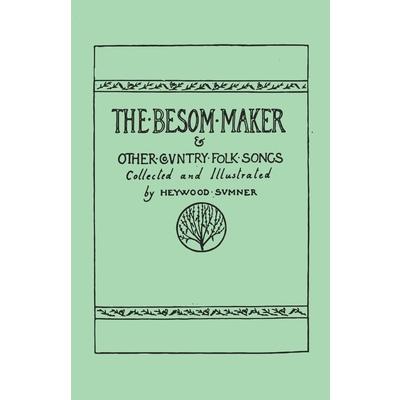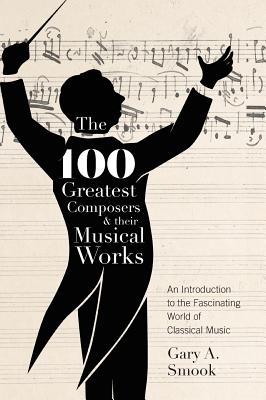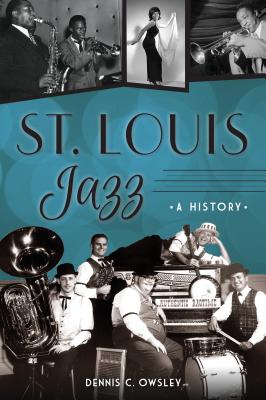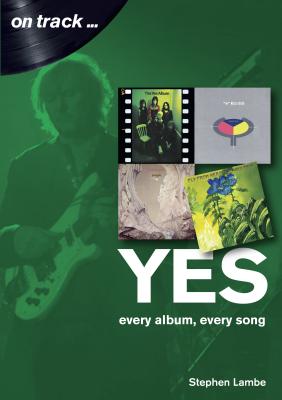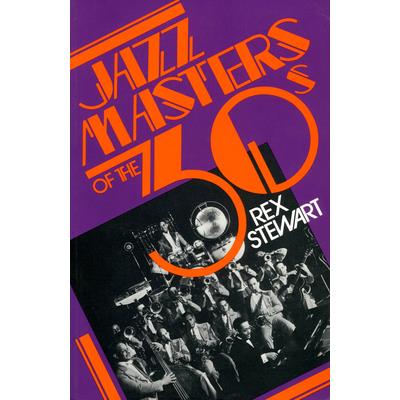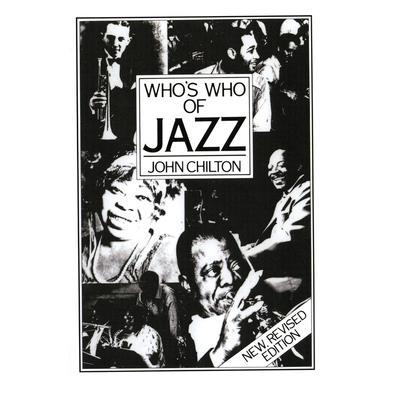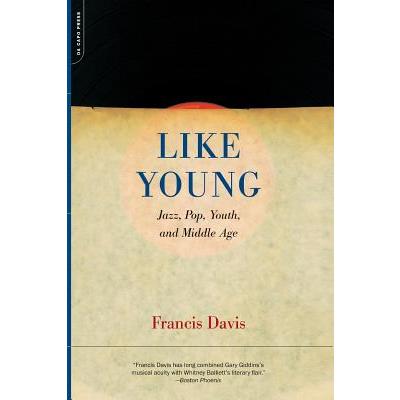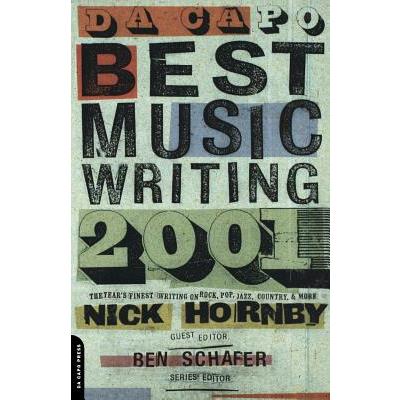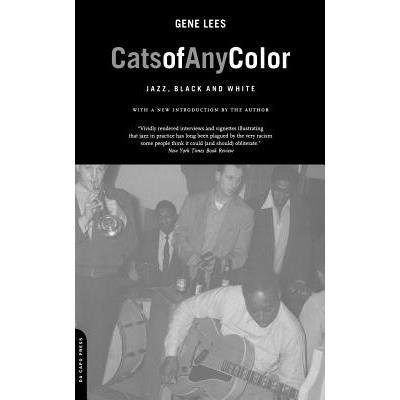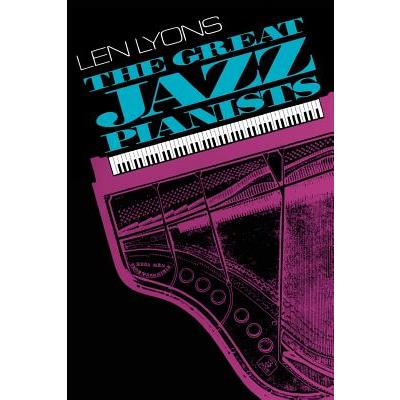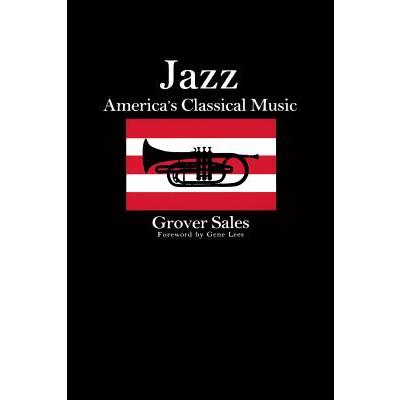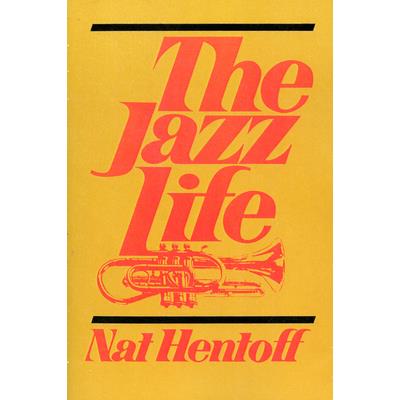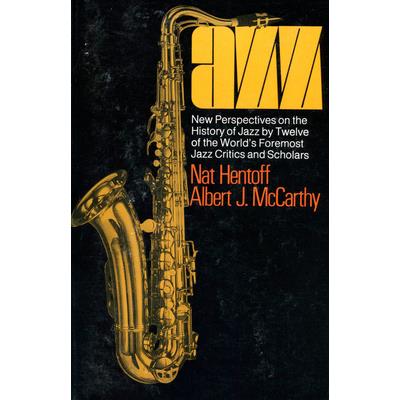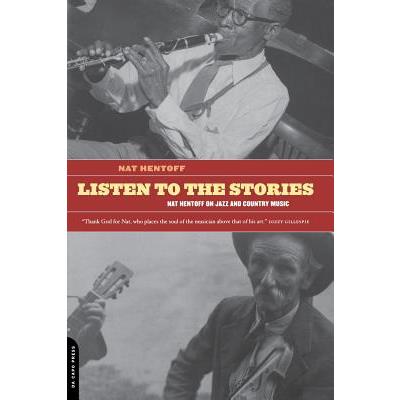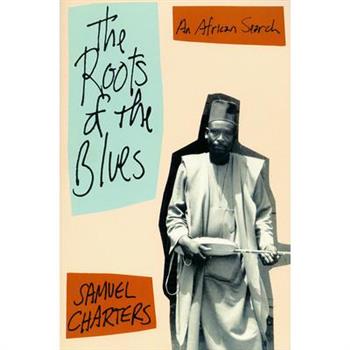Depeche Mode
The extraordinary history of a unique global synth-rock phenomenon: Depeche Mode.They were such devout futurists that they even came from a New Town. Emerging from the unlikely locale of Basildon at the dawn of the Eighties, the unassuming Depeche Mode became pioneers of British electro-pop. Surviving the abrupt early departure of band founder and chief songwriter Vince Clarke, they quickly gathered a fervent cult following before powering into the mainstream.Dave Gahan, Martin Gore, Andrew Fletcher and Alan Wilder took their dark, venal songs of sex, religion, obsession and death to the world's arenas and stadiums. Over four decades, Depeche Mode have seduced millions from Moscow to Montevideo. Yet it has never been an easy ride. Along the way there have been crippling bouts of self-doubt, depression, intra-band fighting, alcohol abuse... and the catastrophic heroin addiction that almost killed the charismatic yet vulnerable Gahan.From the band's earliest stirrings in Essex to the eve of their 40th anniversary, Faith and Devotion is a tale of triumph from adversity: the extraordinary history of a unique global synth-rock phenomenon. It's the story of Depeche Mode.
The Big Book of Bts
THE HOTTEST GROUP IN THE WORLD! Already K-pop's hugest artist, the members of BTS are looking to make 2020 their most successful year ever! Between selling out arenas, dropping mixtapes, and filming a surprise concert documentary, BTS has still found time to release wildly popular hits like "Boy with Luv" and "Idol." For these icons, the best may still be yet to come. The Big Book of BTS is the biggest and most complete guide to all things Bangtan. Including more than 100 fullcolor photographs, you'll get an in-depth look at the lives of RM, J-Hope, Suga, Jimin, V, Jin, and Jungkook. It also explores their meteoric rise, musical influences, unbeatable style, far-reaching activism, and bond with fans. The Big Book of BTS is a must-have for ARMYs as well as new K-pop fans everywhere!
Led Zeppelin
What were "The Houses of the Holy?" Where was the "Stairway to Heaven?" Which strange encounters led to such classics as "Kashmir?" This in-depth look at Led Zeppelin's music reveals the roots and origins of the songs on all nine of their celebrated studio albums. In addition, it tells the stories behind the material released after Zeppelin's breakup in 1980, including the Unledded: No Quarter and the BBC Sessions album.
Mad Scenes and Exit Arias
From the Wall Street Journal's opera critic, a wide-ranging narrative history of how and why the New York City Opera went bankrupt--and what it means for the future of the arts In October 2013, the arts world was rocked by the news that the New York City Opera--"the people's opera"--had finally succumbed to financial hardship after 70 years in operation. The company had been a fixture on the national opera scene--as the populist antithesis of the grand Metropolitan Opera, a nurturing home for young American talent, and a place where new, lively ideas shook up a venerable art form. But NYCO's demise represented more than the loss of a cherished organization: it was a harbinger of massive upheaval in the performing arts--and a warning about how cultural institutions would need to change in order to survive. Drawing on extensive research and reporting, Heidi Waleson, one of the foremost American opera critics, recounts the history of this scrappy company and reveals how, from the beginning, it precariously balanced an ambitious artistic program on fragile financial supports. Waleson also looks forward and considers some better-managed, more visionary opera companies that have taken City Opera's lessons to heart. Above all, Mad Scenes and Exit Arias is a story of money, ego, changes in institutional identity, competing forces of populism and elitism, and the ongoing debate about the role of the arts in society. It serves as a detailed case study not only for an American arts organization, but also for the sustainability and management of nonprofit organizations across the country.
Crossover the Edge
During the 1980s, a time of conflict among alternative and increasingly tribal musical subcultures, an interesting compromise began to take form in the hardcore, punk and metal worlds. Blending the musical and visual elements of all three, this scene within several scenes came to be known as Crossover. Pulling together bands from diverse subcultural backgrounds (including the Skinhead, Oi and Anarcho scenes) to create a unique fusion whose appeal reached out to a large proportion of each of their fans, the movement was nevertheless overlooked by purists from each side. But inarguably, Crossover (or "Speedcore" as some came to call it), lent a fresh air to a metal scene at risk of stagnation, and brought a welcome atmosphere of experimentation to punk rock. Crossover The Edge contains in-depth features on over 100 key bands from the scene's 1980s heyday, including Agnostic Front, Cro Mags, Crumbsuckers, Leeway, Gang Green, Nuclear Assault, Lethal Aggression, D.R.I., Corrosion of Conformity, Impulse Manslaughter, Verbal Abuse, Attitude Adjustment, Suicidal Tendencies, Excel, Beowulf, Dr. Know, Septic Death, Cryptic Slaughter, Accused, Dayglo Abortions, Discharge, Broken Bones, English Dogs, Sacrilege, Warfare, Raw Power, Rumble Militia, Lobotomia, Overkill L.A., Mentors, Void and Amebix. Another 500 bands are also featured briefly.
The White Album
From a writer and music industry insider who worked with The Beatles comes a comprehensive look at the band's only double album--and the world in which they recorded it. The Summer of Love--and many of the free, progressive ideas associated with it--was truly over by 1968, which saw disruption in the factories and revolution on the streets. This turmoil was reflected by The Beatles in the studio where, without the distraction of live performance, they adapted to life after Brian Epstein and with the addition of Yoko Ono. The result, officially called The Beatles but universally known as "The White Album," featured an eccentric, eclectic mixture of styles, techniques, and unconventional songs. This in-depth exploration of The Beatles' classic work has two parts: the A side is the definitive guide to the album, the recording, and the events surrounding it, along with interviews with the people involved. The B-side focuses on the world between 1967 and 1969, and how politics, technology, sports, and entertainment affected people's lives . . . and caused music to change its tune with the times.
Henry Cow
In its open improvisations, lapidary lyrics, errant melodies, and relentless pursuit of spontaneity, the British experimental band Henry Cow pushed rock music to its limits. Its rotating personnel, sprung from rock, free jazz, and orchestral worlds, synthesized a distinct sound that troubled genre lines, and with this musical diversity came a mixed politics, including Maoism, communism, feminism, and Italian Marxism. In Henry Cow: The World Is a Problem Benjamin Piekut tells the band's story-from its founding in Cambridge in 1968 and later affiliation with Virgin Records to its demise ten years later-and analyzes its varied efforts to link aesthetics with politics. Drawing on ninety interviews with Henry Cow musicians and crew, letters, notebooks, scores, journals, and meeting notes, Piekut traces the group's pursuit of a political and musical collectivism, offering up its history as but one example of the vernacular avant-garde that emerged in the decades after World War II. Henry Cow's story resonates far beyond its inimitable music; it speaks to the avant-garde's unpredictable potential to transform the world.
Wish You Were Here
As our world was racked by military conflicts, governmental scandals, political assassination attempts, and a near-total erosion of the public trust, Pink Floyd emerged victorious, responding to this external dissonance with their ultimate band statement.
Sun Records
The tiny Sun studio at 706 Union Avenue in Memphis, Tennessee, may not have looked like much from the outside, but inside musical miracles were being performed daily by its enigmatic owner, Sam Phillips. Phillips began more or less as a talent scout for other record labels, such as the legendary Chess Records in Chicago. However, after discovering a wealth of talent in his own backyard in the Mid-South area, Phillips began his own record label-Sun Records-with an emblematic rising sun and rooster logo. A white man who loved and understood African-American music, Phillips recorded soon-to-be blues icons such as Howlin' Wolf, Rufus Thomas and B.B. King. A seismic shift occurred during one session in 1951 when Phillips recorded "Rocket 88" with Jackie Brenston and Ike Turner. That shift was to become known as rock and roll. A shy white boy named Elvis Presley came into the studio to record a song for his mother's birthday. Phillips recognized something in the young man, and a moment of silliness in the studio ruptured into the first record of the future King of Rock & Roll, "That's All Right." Elvis shot to stardom; Sun Records didn't stop there. Hot on his heels came Jerry Lee Lewis, Carl Perkins and Johnny Cash. However, there wasn't a day that the studio wasn't searching for other artists, other hits. Sun Records: An Oral History (2nd edition) brings to readers the voices of the pillars of Sun Records, the artists, producers and engineers who made the place tick. Thomas (the first hit-maker for Sun), Scotty Moore, Rosco Gordon, Little Milton Campbell, Billy Lee Riley, producer and musician Roland Janes, producer Cowboy Jack Clement and others all tell their inimitable stories about the making of a music empire, the label that put rock and roll on the world map. Music journalist and critic John Floyd has woven together dozens of priceless stories and anecdotes with his own insightful and artful narrative to make this book definitive for anyone interested in Sun Records or the birth and rise of rock and roll. For example, there are firsthand accounts of the early Elvis sessions by Moore, Riley's own account of his legendary drunken rampage in the Sun studio, and a transcript of the back-and-forth hell and damnation conversation between a reluctant Lewis and Phillips just prior to the recording of "Great Balls of Fire." This second edition updates the masterful original book which was critically acclaimed and considered one of the canon of must-have music books.
The Decade That Rocked
Featuring the iconic and never-before-published photography of Mark Weiss, The Decade That Rocked covers the biggest names from the '80s hard rock scene--including Jon Bon Jovi, Ozzy Osbourne, M繹tley Cr羹e, and more. "I have read pretty much every rock 'n' roll biography there is worth reading, and you never know what to expect when you pick up a new book. Well, let me tell you Mark Weiss has raised the bar for rock 'n' roll books with The Decade That Rocked. Mark has always been at the top of his field, and the level of detail and quality put into this book is the ultimate testament to his rock n' roll photographic legacy." - Sebastian Bach "Mark is the real deal. He may not play the guitar, but that camera is his guitar. He's a rockstar." - Gene Simmons "Mark's energy, his creativity, his drive, his positive attitude and his enthusiasm that make him one of the legends of rock photography. It's why his work--both old and new--is still so in demand today. Mark Weiss inspires greatness in all he turns his camera lens on. But don't take my word for it. Just look at the pictures in this book." - Dee Snider "His pictures say as much as the music" - Rob Halford "He was one of the guys. He wasn't one of the 18 photographers you'd work with that day." - Alice Cooper "He had that instinct, to recognize our energy and use his technical talent to capture it." - Joe Perry "The Decade That Rocked breaches a level of intimacy that so many music photographers are lacking today. Each and every photo exemplifies the trust and the synergy between photographer and subject. You can feel the essence of the music in the live shots, just as vibrantly as you can feel the spirit and the essence of the musicians behind the scenes." - Screamer Magazine Mark "Weissguy" Weiss set an unmatched standard for rock photography. Starting out as a teenager by sneaking into concerts with a neighbor's 35mm camera, he embarked on a legendary career that took him around the globe and onto some of the most memorable album and magazine covers in rock history- featuring the likes of Van Halen, Ozzy Osbourne, Aerosmith, and M繹tley Cr羹e to Metallica, Guns N' Roses, Bon Jovi, and KISS, and so many more. With 700+ photos, brand new interviews, and stories from Mark himself, Decade that Rocked is a monument to the photography, friendships, and legacy of an artist that helped define one of rock's most iconic eras. This career-spanning collection features: A unique lens on the golden age of rock: Never-before or rarely seen photos of legends like Van Halen, Ozzy Osbourne, Aerosmith, and M繹tley Cr羹e to Metallica, Guns N' Roses, Bon Jovi, and KISS, as well as countless others whose sound and image defined the era. Exclusive interviews: Ozzy Osbourne, Dee Snider, Nikki Sixx, Joe Perry, Rob Halford, and many more recall their memories of this era-defining decade. Untold Stories: Relive Mark's unbelievable journey through rock history, from getting arrested for selling photos outside of Kiss concert to touring with legends like Van Halen, to photographing Bon Jovi's infamous "Slippery When Wet" shoot, shooting backstage at Live Aid with Black Sabbath, and so many more. Definitive Lens: Creem magazine readers ranked Mark Weiss as rock's top photographer of the 80s. His work has appeared on some of the most iconic album and magazine covers of all time. Captured from the unique vantage point of a photographer who lived and breathed the '80s in all its grit and glory, The Decade That Rocked brings to life the no-holds-barred sounds and sights that changed the world of hard rock and metal forever.
Sea Chanteys
"Sea Chanteys" is a vintage collection of traditional sailor songs. Also known as shanties or chanteys, these songs were tropically sang by sailors aboard ships in order to boost morale and to be sung during some of the more tedious duties of required by the seafaring life. Each song comes complete with the original lyrics and clear sheet music, and are perfect for those with an interest in learning or performing traditional sea songs. Contents include: "Eight Bells", "Away to Rio!", "As Off to the South'ard We Go", "A-Roving", "Old Man Noah", "High Barbary", "Mobile Bay", and "The Mermaid". Many vintage books such as this are becoming increasingly scarce and expensive. It is with this in mind that we are republishing this volume now in a modern, high-quality edition complete with a specially-commissioned new introduction on folk music.
I Am Damo Suzuki
When the anarchic vocalist of Can left the celebrated German band in late 1973, the ensuing decade-long absence was taken by many to be the end of his personal story. But it was just the beginning.In I Am Damo Suzuki, Kenji Damo Suzuki and co-author Paul Woods illuminate a life in music driven by the principle of randomness. The book spans the influence of western music on Suzuki growing up in post-WWII Japan, his rejection of national traditions and a lifelong journey of exploration.After his hippie-influenced beginnings as a provocative street musician, Suzuki s story took an unlikely turn after a chance recruitment into Can, one of the most innovative bands of the seventies.A stint of family life and the role of Japanese salaryman preceded his return to the music world with The Damo Suzuki Band and later with Damo Suzuki's Network, an international vehicle for musical communication using sound instead of words. With contributions from family members, lifelong friends, musical collaborators and Damo's long-term partner, I Am Damo Suzuki is an absorbing portrait of a musical catalyst and enigmatic icon.
Defying Gravity
The image of Jordan with her white shards of beehive and Mondrian make-up is one of the most iconic in pop culture. From the counter of Malcolm McLaren and Vivienne Westwood's taboo-busting shop on 240 King's Road, she helped shape a revolution. But who was the woman behind it all? How did a ballet-mad girl from Sussex make her way, via the clandestine gay clubs of Brighton and London, to the eye of punk's storm? What happened after she shared so many hair-raising adventures with the Sex Pistols, Adam and his Ants, Derek Jarman and Andy Warhol - and then just disappeared? With commentary from key players and close friends including Vivienne Westwood, Paul Cook, Marco Pirroni, Holly Johnson, and her partner behind the SEX counter, Michael Collins - plus a wealth of never-before-seen images - Jordan reveals her outrageous life story. Buckle up for a masterclass in true punk spirit.
Little Book of The Rolling Stones
A bite-sized collection of more than 170 quotes by and about the world's greatest rock 'n' roll band. "There's the sun, there's the moon, there's the air we breathe, and then there's the Rolling Stones." --Keith Richards. Fans who endorse the legendary guitarist's sentiments will pore through every engaging quote in this collection, which shows exactly why the Stones remain in the spotlight after 50 years of performing. In addition to the band members, quotes come from such figures as producer Andrew Oldham and Paul McCartney ("I see a good little rock 'n' roll band--not as good as the Beatles, but good.")
El libro de la mica cl嫳ica/ The Book of Classical Music
Grandes ideas, explicaciones sencillas El libro de la m繳sica cl獺sica analiza con un lenguaje claro m獺s de noventa obras de distintos compositores, unos legendarios y otros menos conocidos, e incluye diagramas e infograf穩as que explican los conceptos fundamentales y las grandes ideas que subyacen a la creaci籀n y la apreciaci籀n de la m繳sica cl獺sica. Parte vital de la cultura humana, la música ha sido un rasgo característico de cada civilización al menos desde el Neolítico, como demuestran las pinturas rupestres y la arqueología. La que comúnmente se denomina 竄música cl獺sica罈 es la música de la civilización occidental desde la época medieval hasta hoy. En este amplio sentido abarca mucho más que la música orquestal o para piano que mucha gente imagina. La m繳sica cl獺sica explicada de forma sencilla Este libro de m繳sica cl獺sica en espa簽ol presenta su evoluci籀n e historia como una parte esencial de la cultura europea y su difusi籀n alrededor del mundo para deleite, sorpresa y, en ocasiones, desconcierto de las audiencias a lo largo de los siglos. Tanto el oyente ocasional como el aut矇ntico aficionado encontrar獺n en este sugerente libro de m繳sica una 繳til herramienta para entender mejor la m繳sica cl獺sica a trav矇s de los siguientes cap穩tulos: - M繳sica medieval. 1000-1400. - Renacimiento. 1400-1600. - Barroco. 1600-1750. - Clasicismo. 1750-1820. - Romanticismo. 1810-1920. - Nacionalismo. 1830-1920. - M繳sica moderna. 1900-1945. - M繳sica contempor獺nea. El libro de la m繳sica cl獺sica, pertenece a la galardonada serie Grandes Ideas explica temas complejos de un modo f獺cil de entender mediante explicaciones claras y alej獺ndose del academicismo tradicional. Su creativo dise簽o y los gr獺ficos innovadores que acompa簽an al texto hacen de esta serie una introducci籀n perfecta a una gran diversidad de materias para toda la familia.
Puccini’s Operas
Opera was and still is one of the oldest forms of entertainment. It's been around longer than any other art form known to mankind, longer than radio, the internet, video games, television and even movies. It's an art form in which singers and musicians perform a dramatic work combining a script called a libretto and musical score, usually in a theatrical setting. Opera incorporates music, singing, scenery, costumes and sometimes dancing. Some operas have spoken dialogue called a Singspiel in which the singers talk between songs aka arias. Other operas have a singing style called a Recitative in which the singers imitate spoken dialogue by singing their lines instead of talking.
Ever After
Written by Barry Singer--one of contemporary musical theater's most authoritative chroniclers--Ever After was originally published in 2003 as a history of the previous twenty-five years in musical theater, on and off Broadway. This new edition extends the narrative, taking readers from 2004 to the present. The book revisits every new musical that has opened since the last edition, with Barry Singer once again as guide. Before Ever After appeared in 2003, no book had addressed the recent past in musical theater history--an era Singer describes as "ever after musical theater's many golden ages." Derived significantly from Singer's writings about musical theater for the New York Times, New York Magazine, and The New Yorker, Ever After captured that era in its entirety, from the opening of The Act on Broadway in October 1977 to the opening of Avenue Q Off-Broadway in March 2003. This new edition brings Ever After up to date, from Wicked, through The Book of Mormon, to Hamilton and beyond. Once again, this the first book to cover this new, pre-pandemic age of the Broadway musical. And, once again, utilizing his recent writing about musical theater for HuffPost and Playbill, Barry Singer's viewpoint is comprehensive and absolutely unique.
Inside Jazz
By 1940 the big band sound had grown stale, and jazz musicians began to search out new sounds and styles. At the Harlem nightclub Minton's Playhouse, a small group of musicians -- John Birks, Dizzy Gillespie, Coleman Beau Hawkins, and Thelonious Monk, among sounding blend of flatted fifths, unfamiliar chord lines, and accelerated offbeat rhythms. They were joined on 52nd Street by alto saxist Charles Bird Parker, and bop -- or bebop, as it was first called, from the triplet figure buh-BE-bop -- was born.Bop was aggressive, provocative, and belligerent, Its proponents wore gears and berets and refereed to the Dixieland and New Orleans diehards as moldy figs who in tureen labelled the new jazz the modern complex chord, and a new reperatory into jazz, and by the end of the forties the moldy figs were forced to concede that bop was indeed the harbinger of a new direction in American jazz.Critic Leonard Feather was one of the earliest and most persistent champions of bop. It was he who persuaded RCA Victor that the new music was worth recording. His Inside Jazz is a full-length account of bop: its origins and development and the personalities of the musicians who created it. Numerous photographs and anecdotes bring this innovative era in jazz history to life once more.
George Frideric Handel - Rinaldo - HWV7b - A Full Score
Many of the earliest books, particularly those dating back to the 1900s and before, are now extremely scarce and increasingly expensive. We are republishing these classic works in affordable, high quality, modern editions, using the original text and artwork.
Rock n’ Roll’n - The 50’s and 60’s
The 50's ushered in a period of major change. Crime was low, children played freely outside, Elvis was Rock n' Roll'n, a home cost $14,500, a car about $2,000. Teenagers were discovering the Rock n' Roll lifestyle spreading across the country including Motown and Rock n' Roll music, Doo-Wop, Teen dances, Going "Steady" with your girlfriend or boyfriend, Cruisn' on Friday and Saturday nights, Hang'n at the Drive-In Restaurant, American Bandstand Dancing Mania on TV, Classic Car Clubs, Drag racing with the boys, Twenty cent gas, Slick hairs do's..........and more! This "Autobiography" chronicles the lives of a boy and his friends growing up in the small San Francisco Bay Area town of Vallejo, California during the legendary 50's and 60's, experiencing everything unique about the fabulous Rock n' Roll culture sweeping across America.Although the events in this story occurred in the Bay Area, the same Rock n' Roll frenzy was occurring all across America. The book will not only appeal to those who lived in California at the time, but to others all across the country who experienced that fabulous legendary era, awakening fond memories of bygone days. For those who weren't around during that period, the book will provide insight about how it was to live the "American Graffiti" lifestyle then....told by the author who experienced it all. The story begins in the winter of 1944 as the boys parents give up everything in rural upstate New York and head to California for a piece of the American Dream. Westward Ho! to the Promised Land of the Golden State! Step back in time. Discover what many consider to be the Best of times in America!
The Besom Maker and Other Country Folk Songs
"The Besom Maker and Other Country Folk Songs" is a collection of traditional English countryside songs first published in 1888. The songs of this collection are such as would have been sung in the fields and meadows for generations, and perhaps are still known to some. With beautiful illustrations and complete lyrics and sheet music, this volume is not to be me missed by those with an interest in learning and playing traditional English songs. The songs include: "The Besom Maker", "God Speed the Plough", "The Wassail Song", "My Johnnie was a Shoemaker", "The Reaphook & the Sickle", "Mobblety Bobblety", "The Two Young Men of Kenilworth", "Forty Dukes a Riding", "The Jolly Ploughboy", and more. Many vintage books such as this are becoming increasingly scarce and expensive. It is with this in mind that we are republishing this volume now in an affordable, modern, high-quality edition complete with a specially commissioned new introduction on folk music.
The Pipers’ Guild Handbook - The Origin and History of the Pipe Movement with Instructions on How to make Pipes with Diagrams
This book contains a vintage guide to designing and constructing wooden pipe instruments. Profusely illustrated and written in simple, plain language, this guide is perfect for those with little previous experience and is highly recommended for modern readers with an interest in hand making instruments. Contents include: "The Story of Pipe-making", "How to Make a Treble Pipe", "Materials and Tools", "Tools", "Corks", "The Window and the Window-sill", "The Passage Roof", "The Cork", "Making the Holes", "The Treble Pipe", "A Pipe when it is Made", "Difficulties in Obtaining a Good Note", et cetera. Many vintage books such as this are increasingly scarce and expensive. We are republishing this volume now in an affordable, modern, high-quality edition complete with its original artwork and text.
Beethoven’s Conversation Books
A complete new edition of Beethoven's conversation books, now translated into English in their entirety for the first time, covering a period associated with the revolutionary style of what we call "late Beethoven". Ludwig van Beethoven (1770-1827) is recognized the world over as a composer of musical masterpieces exhibiting heroic strength, particularly in the face of his increasing deafness from ca. 1798. By 1818, the Viennese composer hadbegun carrying blank booklets with him, for his acquaintances to jot their sides of conversations, while he answered aloud. Often, he himself used the pocket-sized booklets to make shopping lists and other reminders, including occasional early sketches for his compositions. Today, 139 of these booklets survive, covering the years 1818 up to the composer's death in 1827 and including such topics as music, history, politics, art, literature, theatre, religion, and education as perceived on a day-to-day basis in post-Napoleonic Europe. An East German edition, begun in the 1960s and essentially complete by 2001, represents a diplomatic transcription of these documents. It is a masterpiece of pure scholarship but is difficult to use for anyone who is not a specialist. Moreover, Beethoven scholarship has moved on significantly since the long-ranging genesis of the German edition. These important booklets arehere translated into English in their entirety for the first time. The volumes in this series include an updated editorial apparatus, with revised and expanded notes and many new footnotes exclusive to this edition, and brand newintroductions, which together place many of the quickly changing conversational topics into context. Due to the editor's many years of research in Vienna, his acquaintance with its history and topography, as well as his familiarity with obscure documentary resources, this edition represents an entirely new venture in source studies - vitally informative for scholars not only in music but also in a wide variety of disciplines. At the same time, these oftenlively and compelling conversations are now finally accessible for the English-speaking music lover or history buff who might want to dip into them and hear what Beethoven and his friends were discussing at the next table. THEODORE ALBRECHT is Professor of Musicology at Kent State University, Ohio.
The 100 Greatest Composers and Their Musical Works
His fascinating exploration takes you inside the rich music and colorful lives of the world's greatest classical composers. From Bach to Stravinsky and beyond, you will learn how the unique life stories of these gifted composers are reflected in the musical masterpieces that we enjoy to this day.Designed as an introductory book on classical music, this comprehensive collection presents biographical snapshots of the major composers in the context of distinct historical and stylistic periods and in relation to their notable contemporaries. Special attention is given to recognizing their prominent musical works. The book delineates the many forms of instrumental and vocal music; and it explores the "basics" of tonality, musical structure, performance criteria, the orchestra and its instruments, orchestration, chamber music, and the cataloguing of musical works. As well, the newcomer to classical music will find advice on building a musical library.This book is an excellent source of information about classical music in a unique and entertaining format. It will help lay the foundation for a lifelong love of classical music, through the great musical heritage of these fine composers.
What About Tomorrow?
Punk arrived in Soviet Russia in 1978, spreading slowly at first through black market vinyl records and soon exploding into state-controlled performance halls, where authorities found the raucous youth movement easier to control. In fits and starts, the scene grew and flourished, always a step ahead of secret police and neo-Nazis. Most Westerners had never even heard of Russia's punk movement until Pussy Riot burst onto the international stage. This oral history takes you through four decades of the scene's evolution, from its origins in St Petersburg and Moscow to uniquely thriving punk scenes in the provincial capitals. Includes never-before-published photographs of many of the bands.
St. Louis Jazz
In the early twentieth century, St. Louis was a hotbed for ragtime and blues, both roots of jazz music. In 1914, Jelly Roll Morton brought his music to the area. In 1919, Louis Armstrong came to town to play on the "floating conservatories" that plied the
Once upon a Time in Shaolin
The untold story of the world's most controversial album---a surreal tale of secret recordings, the Wu-Tang Clan, baffled customs agents, the world's most hallowed art institutions, and a villain of comic book proportions: Martin Shkreli. In 2007, the innovative young Wu-Tang producer, Cilvaringz, took an incendiary idea to his mentor the RZA. They felt that the impact of digitization threatened the sustainability of the record industry and independent artists, while shifting the perception of music from treasured works of art to disposable consumer products. Together they conceived a statement so radical that it would unleash a torrent of global debate---a sole copy of an album in physical form, encased in gleaming silver and sold through an auction house for millions as a work of contemporary art. The execution of this plan raised a number of complex questions: Would selling an album for millions be the ultimate betrayal of music? How would fans react to an album that's sold on the condition that it could not be commercialized? And could anyone ever justify the selling of the album to the infamous Martin Shkreli? As headlines flashed across the globe, the mystery only deepened. Opinions were sharply divided over whether this was high art or hucksterism---quixotic idealism or a cynical cash grab. Was it a noble act of protest, an act of cultural vandalism, an obscene symbol of greed, a subversive masterpiece, a profound mirror for our time, or a joker on capitalism's card table? As senior adviser to the project, Cyrus Bozorgmehr is uniquely placed to unlock the secrets behind the album and tell the full, unadulterated story. With explosive revelations about backroom plans made public for the first time, Once Upon a Time in Shaolin charts the album's journey from inception to disruption in vivid style. An extraordinary adventure that veers between outlandish caper and urgent cultural analysis. Once Upon a Time in Shaolin twists and turns through the mayhem and the mischief, while asking profound questions about our relationship with art, music, technology, and ultimately ourselves.
Yes
Yes, whose celebrated 50 years as a band in 2018, are the archetypal 1970s progressive rock group. Playing powerful and adventurous music when it was briefly part of the mainstream, the band thrilled millions with their iconic albums and epic live shows. Records like Fragile and Close to the Edge helped define an era and although the band dissolved at the end of the decade, Yes emerged once again with 90125, a streamlined, modern sound in the 1980s and a US number one hit single in 'Owner of a Lonely Heart'. The band continue to release albums and play live into the new millennium.
Jazz Masters of the 30s
This is the only jazz history written by a musician that is not strictly autobiographical. Rex Stewart, who played trumpet and cornet with Fletcher Henderson and Duke Ellington, knew personally all the giants of jazz in the 1930s and thus his judgments on their achievements come with unique authority and understanding. As a good friend, he never minimizes their foibles; yet he writes of them with affection and generosity. Chapters on Fletcher Henderson, Coleman Hawkins, Red Norvo, Art Tatum, Big Sid Catlett, Benny Carter, and Louis Armstrong mix personal anecdotes with critical comments that only a fellow jazz musician could relate. A section on Ellington and the Ellington orchestra profiles Ben Webster, Harry Carney, Tricky Sam Nanton, Barney Bigard, and Duke himself, with whom Rex Stewart was a barber, chef, poker opponent, and third trumpet. Finally, he recounts the stories of legendary jam sessions between Jelly Roll Morton, Willie the Lion Smith, and James P. Johnson, all vying for the unofficial title of king of Harlem stride piano. It was the decade of swing and no one saw it, heard it, or wrote about it better than Rex Stewart.
Who’s Who of Jazz
John Chilton's Who's Who of Jazz has established itself as a major jazz reference book on the lives of over a thousand musicians born before 1920. The informative biographies give the essential details of each musician's life and career, and jazz greats jostle with unknowns for the readers attention. This completely revised edition adds much new information to the musical histories of the players, and the biographies of some of the major figures have been rewritten to incorporate recent research.
Like Young
Francis Davis is one of this nation's savviest and most admired music and cultural critics. In this collection of essays he observes the modern jazz and pop that have reached middle age at the same moment as many of their listeners, including the author. Moving through the scales from Frank Sinatra and Billie Holiday to Ornette Coleman and Sun Ra, he comments on music both old and new, on stage and screen. In addition to taking the pulse of jazz at the millennium, he offers fresh insights on pop icons like Elvis Presley, Bob Dylan, Burt Bacharach, and Brian Wilson. He also goes beyond character sketch and critical script to weave in fragments of his own life, making this the most personal of his collections. Like Young will resonate both with those who have spent two decades reading Davis and those who are discovering him today.
Da Capo Best Music Writing 2001
A new collection of essays and articles about music and its culture covers diverse modern styles--rock, pop, rap, jazz, blues, country, and more--and features works by Rick Moody, Camden Joy, Courtney Love, Richard Meltzer, Whitney Balliett, and other notables.
Cats of Any Color
In a series of candid interviews with jazz players, composers, and critics, Gene Lees explores racism in the past and present of jazz--both the white racism that for decades ghettoized black musicians and their music, and the prejudice that Lees documents of some black musicians against their white counterparts. With subjects ranging from Horace Silver to Dave Brubeck to Red Rodney, and a new introduction analyzing recent developments, Cats of Any Color chronicles jazz as a multiethnic art.
The Great Jazz Pianists
This comprehensive survey of jazz piano, beginning with a brief history of the instrument within the jazz tradition and concluding with interviews that present twenty-seven pianists in their own words, is both wonderfully anecdotal and a serious piece of jazz history. Lyons has assembled a giant concert of piano voices--Bill Evans, Herbie Hancock, Teddy Wilson, Oscar Peterson, Keith Jarrett, Randy Weston, Cecil Taylor, Horace Silver, Dave Brubeck, Sun Ra, McCoy Tyner, Toshiko Akiyoshi, Chick Corea, and many others. The pianists are candid, intense, and always opinionated. Yet their responses are infused with a keen appreciation for fellow musicians, their contemporaries, and those who came before--Walter, Tatum, Ellington. For pianists everywhere, whatever their individual style, this book will speak to and for you as it expresses the thoughts of its many great artists.
Jazz PB
Jazz: America's Classical Music is a delightful introduction and guide to this complex and compelling music and to its rich history. In an engaging and conversational style, renowned jazz teacher Grover Sales tells of the lives and music of the greats--Ellington, Tatum, Hawkins, Coltrane, Parker, Hines, Goodman, Armstrong, and many others--with a mix of important facts, fascinating anecdotes, and brilliant interpretations. Illustrated with astonishing photographs of the artists in performance, Jazz: America's Classical Music is a classic text, an ideal book for beginners and an inspiring one for serious students of the art of jazz.
The Jazz Life
The last few years have witnessed an enormous resurgence in the popularity of jazz, after some lean times in the sixties when many potential jazz fans turned to rock. Now the pendulum is on the backswing, and vintage and modern jazz as well as "jazz rock" are attracting huge new audiences. One factor involved in the comeback of jazz among blacks and whites alike is the rise of black consciousness, with its search for roots in the American experience. Nat Hentoff's The Jazz Life explores the social, economic, and psychological elements that make up the context of modern jazz. Among the jazz greats whose lives and work are discussed are Count Basie, Charles Mingus, John Lewis, Miles Davis, Thelonius Monk, and Ornette Coleman. Written with intelligence, passion, and wit, this jazz classic is of immense importance to anyone wanting a better understanding of the jazz--or indeed our American life.
Jazz
The names of Nat Hentoff and Albert J. McCarthy have become almost synonymous with jazz writing. Hentoff, editor of Jazz Review, writer for Downbeat, High Fidelity, New Yorker, and the Village Voice, and McCarthy, editor of Jazz Monthly, have raised jazz beyond mere appreciation and discography to a subject which demands the rigorous application of musicological, sociological, and historical analysis. In addition to their own contributions, the twelve articles they have commissioned by internationally noted critics and scholars provide almost revolutionary evidence of the emergence of Jazz as a serious art form.
Anti-Rock
Rock is a music of rebellion against authority, and has consequently frightened and outraged people throughout its forty-year history. Anti-Rock is the first book to detail the objections of rock's detractors. Critics from parents to religious groups, industry executives to scientists, government spokesmen to eccentric crusaders, have all attacked rock vehemently with comments such as "It's the jungle strain gets 'em all worked up"; it's "one step from fascism"; and "These deafening, dope-ridden, degenerate mob scenes have no more place in our America than would a publicly promoted gang rape." Here is: Albert Goldman, writing in the New York Times in 1968, comparing Mick Jagger to Adolf Hitler. A 1981 university study concluding that prolonged exposure to disco music "causes homosexuality in mice and deafness in pigs." Dr. John, a New York physician, writing in 1977 that rock music causes "a breakdown in the synchronization of the two sides of the brain." Tipper Gore, the former Vice-President's wife, co-chair of the Parents Music Resource Center and author of Raising PG Kids in an X-Rated Society, commenting on heavy metal lyrics: "I'm a fairly with-it person, but this stuff is curling my hair."
Ascension
"Ascension is as spellbinding as Coltrane's music."--The New Review of Records "This remarkable book traces the development of Coltrane's music as it moved from hard bop to the freest jazz. . . . Informed and convincing, Ascension belongs on the short list of essential music books . . ."--Lang Thompson, Option "Nisenson . . . presents us with a sensitive and vivid portrait of Coltrane as he progressed from a 'journeyman bopper' addicted to alcohol and heroin to a profoundly spiritual 'warrior' seeking knowledge of God through the making of music."--Booklist "Equal parts biography, jazz history, social history, and listener's guide, Ascension manages to be both entertaining and enlightening. Though Eric Nisenson is an avowed fan of Coltrane, he maintains clearheadedness where others often succumb to gibberish. As a listener's guide to Coltrane recordings, the book is perceptive and thorough."--New York Times Book Review
Talking Jazz
"As you read, light bulbs switch on: that's what was going when she recorded that; now I can see where he got that sound."--LA Weekly43 Jazz Conversations Miles Davis, Gil Evans, Dizzy Gillespie, Jon Hendricks, Max Roach, Betty Carter, Jackie McLean, Don Cherry, Sonny Rollins, McCoy Tyner, Archie Shepp, Herbie Hancock, Tony Williams, Keith Jarrett, Wynton Marsalis, and Jack DeJohnette-these are just a few of the jazz musicians whose conversations with Ben Sidran are recorded in this volume. In stimulating, personal, and informative discussions, they not only reveal their personalities, but also detail aspects of the performance, technique, business, history, and emotions of jazz. Newly expanded with previously unpublished dialogues with David Murray, Dr. John, and Mose Allison, Talking Jazz is undoubtedly the best oral history of recent and contemporary jazz.
A Whore Just Like the Rest
He is one of the inventors of rock criticism. His first book, The Aesthetics of Rock (acclaimed by Greil Marcus as "a disemboweling of rock's soft white underbelly"), became an instant cult classic when published in 1970. And for the next thirty years he fearlessly expanded the boundaries of music writing. Now he has collected the best of his prodigious output into a gonzo sampler of the reviews, profiles, interviews, and essays that form the heart of his rockwriter legacy. Traveling from psychedelia to the "dinosaur-rot early '70s" to the redeeming majesty of punk and the constant solace of jazz, this will stand as a remarkable document of an era by a singular voice in music writing.
Jazz Singing
This book is an overview of jazz and jazz-influenced pop singers. Among the major figures discussed are Armstrong, Crosby, Holiday, Fitzgerald, Sinatra, Eckstine, Vaughan, Torme and Bennett, along with descriptions of the contributions of secondary and forgotten talents.
The Da Capo Jazz and Blues Lover’s Guide to the U.S.
Where did Charlie Parker first play with Dizzy Gillespie? What are the coolest clubs in Chicago? Which city has the largest jazz museum? Where is Howlin' Wolf buried? The answers can be found in The Da Capo Jazz and Blues Lover's Guide to the U.S., an insiders look at all the places where jazz and blues live, from national clubs to unmarked holes in the wall, in twenty-five cities and the Mississippi Delta. With the most up-to-date listings for festivals, historic theaters, record stores, and radio stations-plus anecdotes from club owners and musicians-this is the essential "where-to" for jazz and blues fans everywhere.
Beat Punks PB
Here, accompanied by dozens of unique photographs, are the very best of Victor Bockris's infamous interviews, essays, and observations on the stars of downtown Manhattan in the 1970s and 1980s. The internationally acclaimed biographer Bockris was there as a witness, friend, collaborator, and co-conspirator. Some of the stars were founding members of Beat or Punk, others were just passing through. But all of them-rockers, rebels, artists, and intellectuals-revealed more to Bockris than they did to any other writer: Allen Ginsberg, Richard Hell, Andy Warhol, Robert Mapplethorpe, Debbie Harry, William Burroughs, Patti Smith, Marianne Faithfull, Keith Richards, Terry Southern, Martin Amis, and Susan Sontag. Bockris's conclusion-that Punk owed the Beats a big debt and that the Beats were in turn re-animated by the Punks-is argued from the perspective of someone who was in the thick of it, and who loved every minute of it.
Listen to the Stories
Here is Nat Hentoff's deeply felt exploration of jazz, blues, country, and gospel -- and the musicians who bring the music to life. Hentoff has not only loved music all his life, he has lived it by being friends with many of the musicians he writes about in this collection. Hentoff poignantly describes the early days of Roy Eldridge and the last years of Billie Holiday and Bird. He tells amazing stories of the Count, Duke, and Dizzy. "Full of insightful behind-the-scenes encounters" (San Francisco Chronicle), Listen to the Stories covers new recordings and old legends, remarkable lives and unforgettable music.
Billie’s Blues
Anyone who has ever heard a Billie Holiday record knows the sound of her voice--sad, sexy, always relaxed but securely aware of the beat. Conveying a poignancy that cut to the heart of a song, she redeemed even trivial material with her impeccable sense of dramatic phrasing and time. The well-known tale of her lifelong battle with drugs has obscured the artistry that has made her one of the most revered singers of the twentieth century. Everyone from Frank Sinatra (who in the 1950s called her "unquestionably the most important influence on American popular singing in the last twenty years") to Ella Fitzgerald and Sarah Vaughan has recognized the singularity of her interpretations. The racism that Billie found at every turn, whether in Artie Shaw's band or in the heart of the south, immortalized in the chilling song "Strange Fruit," cannot be overlooked in her biography. Jazz historian John Chilton has told the story of her short, tragic, influential career with restraint, correcting many of the more sensational tales she wrote about herself in Lady Sings the Blues. Buck Clayton, who knew Billie in the Basie band during the 1930s, has written a warm and personal foreword to this fascinating biography of a great American artist.
The Roots of the Blues
"I went to Africa to find the roots of the blues." So Samuel Charters begins the extraordinary story of his research. But what began as a study of how the blues was handed down from African slaves to musicians of today via the slave ships, became something much more complex. For in Africa Samuel Charters discovered a music which was not just a part of the past but a very vital living part of African culture. The Roots of the Blues not only reveals Charters's remarkable talent in discussing African folk music and its relationship with American blues; it demonstrates his power as a descriptive and narrative writer. Using extensive quotations of song lyrics and some remarkable photographs of the musicians, Charters has created a unique contribution to our understanding of both African and American cultures and their music.
The Legacy of the Blues
Blues is a language--one which has evolved its own rules and which is the sole property of a culture always forced to the periphery of white society. As such it is a political language. Whether it is passed as a legacy from African village to Mississippi farm, or from farm to Chicago ghetto, or from ghetto to Paris cafe, it is part of a larger oral heritage that is an expression of black America. Makeshift instruments, runaway slaves, railroads, prisons, empty rooms, work gangs, blindness, and pain have all been involved in the passing of this legacy, which has moved from hand to hand like a bottle of whiskey among friends and which now, for whatever reasons, seems faced with extinction. As Lightnin' Hopkins says: "I see a few young musicians coming along. But it's not many. It's not many at all, and the few that is--I'll tell you, you know what I mean, they don't have it. They just don't feel it. . . . I never had that trouble. I had the one thing you need to be a blues singer. I was born with the blues."With an awareness of the urgency involved, and with considerable devotion, Samuel Charters has chosen twelve major bluesmen, each whom represents a major facet of the blues, and has written about them. Rather than adopt the voyeuristic tone of the academician, he has used the direct visceral images that have always composed the blues. Also included are interviews, photographs, lyrics, and separate chapters on the black experience in America, and the evolution of the blues language from its African origins. Samuel Charters has renewed contact with the greatness of the blues legacy--from the haunting lyric songs of the bluesmen like Robert Pete Williams and Lightnin' Hopkins to the fiercely joyous shouts of Champion Jack Depree, Memphis Slim, and Mighty Joe Young.




